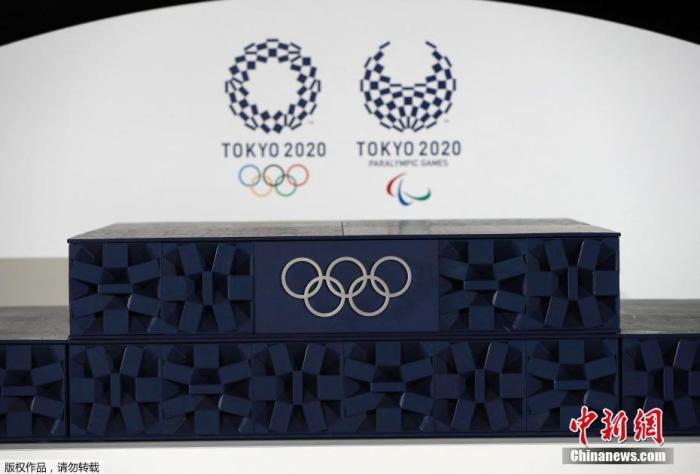China News Service, June 19, reported that there is only more than one month left before the opening of the Tokyo Olympics in Japan on July 23. Tokyo began to vaccinate the staff of the Olympic and Paralympic Games with the new crown on the 18th.
In addition, the Japanese government's epidemic expert group recommended that the Tokyo Olympics be "better to be held without spectators." However, Seiko Hashimoto, chairman of the Tokyo Olympic Organizing Committee, prefers to allow some local spectators to enter the venue, and the expected maximum number is 10,000. .
Data map: On June 3, local time, the 50-day countdown commemorative ceremony of the Tokyo Olympic Games was held at the Ariake Stadium in Tokyo.
The picture shows the podium of the Olympic Games awards ceremony unveiled at the ceremony.
The Tokyo Metropolitan Government has set up a vaccination center in its main office building. It plans to vaccinate about 2,500 people with the Pfizer vaccine provided by the International Olympic Committee every day by the end of August. The vaccination targets include Olympic volunteers, staff in the Olympic village and competition venues, Media workers and medical workers.
In addition, Japan has not yet decided whether to allow local audiences to watch the Olympics.
On the 18th, Nagao Minshige, the government expert group on the epidemic, conveyed the expert group’s recommendations to Seiko Hashimoto, "Holding the Olympic Games without spectators is the best choice."
But Seiko Hashimoto said, “As long as there are spectators who want to enter the Olympics, we should meet their requirements as much as possible while minimizing the risk of infection.”
The Tokyo Olympic and Paralympic Games Organizing Committee released on the 18th draft spectator guidelines based on the new crown epidemic prevention measures.
In order to avoid public transportation and crowding around the venue, the draft requires spectators to ensure ample time when they come to the venue.
In the case of cross-county visits, the draft requires spectators to implement epidemic prevention measures in public transportation, accommodation facilities, and dining venues.
In addition to trying to avoid making noise and talking loudly around the venue, the draft also calls on the audience to keep a distance from people other than those who live with them when they move in the venue.
Tokyo Metropolitan Government will end the "state of emergency" on June 20 and is expected to maintain the "quasi-emergency" until July 11.
If Tokyo can lift the "quasi-emergency" before the opening of the East Olympics, the "up to 10,000" entry measures may apply.
Seiko Hashimoto said that the Tokyo Olympic Organizing Committee will hold a new round of five-party talks with the International Olympic Committee, the International Paralympic Committee, the Japanese government and the Tokyo Metropolitan Government on the 21st, and it is expected to reach an agreement on whether the audience will enter the venue. Final agreement.

